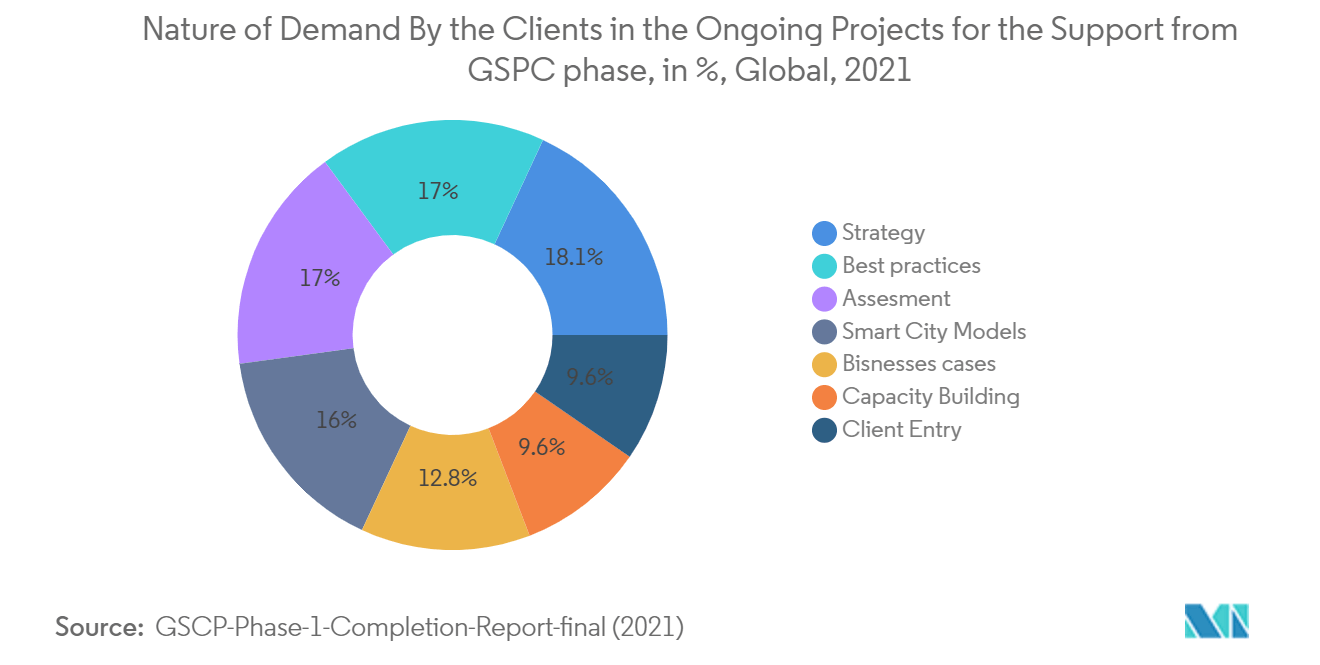Market Trends of Global LWAN Industry
This section covers the major market trends shaping the LWAN Market according to our research experts:
Utilities Segment will Hold the Major Share of the Market
- The introduction of LoRa in 2010 and Sigfox in 2009 was expected as the start of the shift away from FN and PLC. However, the utility industry is risk-averse, and any new technology takes time to gain a foothold in the market. The utilities tended to often stick to the 'tried and tested' solutions, especially in established markets. However, these technologies saw enough interest that they caused a reactive response from the telecommunication industry, thus paving the way for the creation of LTE-M and NB-IoT.
- Communities and cities across the globe are looking to adopt advanced technologies such as the Internet of Things (IoT) and Cyber-Physical Systems (CPS) to improve the quality of life for their residents. Such a system involves cyber-networking devices and other supporting systems working with physical infrastructure. When applied to health care, transportation, utilities, and other sectors, these CPS and IoT could promote economic growth, expand and improve services, and enhance the quality of life.
- For Instance, In France, Birdz, which already operates 400,000 LoRa-connected smart meters in Lyon, announced that it would connect over 3 million smart water meters to the Public LoRaWAN network over the next ten years. NICIGAS installed 850,000 meters of gas with Sigfox connectivity in Japan. In China, NB-IoT tracks nearly 1 million electric bikes in Zhengzhou and monitors 170,000 wired smoke detection and warning systems in rental homes in the Hangzhou Yuhang district.
- Many government agencies are actively initiating new projects to improve the life quality of residents. For instance, NIST and its partners advise and nurture Clusters in their development of groundbreaking Internet of Things (IoT) applications for smart cities and communities. The GCTC so far has recruited over 200 Action Clusters, involving 500 companies and over 200 cities and universities. Forty percent of these Clusters are outside the U.S. These Action Clusters are enabling innovation across the United States, Asia, Africa, and Europe.
- In February 2022, NIST International Collaboration will develop a new framework for smart cities and communities. The framework provides the basis for developing measurement methods and tools that allow for adaptability, integration, and extensibility at three interacting levels of analysis: infrastructure services, technologies, and community benefits.

Asia Pacific market Accounts to Hold Major Growing Market
- The market growth is attributed to the rising demand for IoT applications. Smart city development is expected to support the market demand. Prominent technology enterprises are emphasizing strategic partnerships to deliver diverse smart city solutions like IoT, digital transformation, and the adoption of industry 4.0. For instance, in September 2020, Nokia signed a partnership agreement with Optus, a telecommunications company, to provide IoT software solutions for Australian enterprises.
- The Korea-World Bank Smart City Partnership Program (P166893), more widely known as the Global Smart City Partnership Program (GSCP), was launched through a long-standing partnership between the World Bank and Korea. The Bank and MOLIT agreed to collaborate through a dedicated program on smart cities, for which the latest report was published in December 2021 called GLOBAL SMART CITY PARTNERSHIP PROGRAM PHASE 1 COMPLETION REPORT, according to which the demanding nature of the client is focused on digital transformation ( technologies like digital twin and adaptation of industry 4.0 ), and smart city infrastructure.
- According to the Economist Intelligence Unit (EIU), for companies in Asia, leadership in digital transformation is often the result of consumer pressure. Asia is becoming the place where consumer companies are figuring out how to make their business future-proof, which becomes evident as China is leapfrogging its peers elsewhere when it comes to digital technology. For instance, in China, NB-IoT monitors 170,000 connected smoke detection and alarm devices in rental homes in the Yuhang district of Hangzhou and is used to track close to 1 million electric bikes in Zhengzhou.
- The public and government sector segment held more than 25% of Asia Pacific low power wide area network (LPWAN) market share in 2021 as the region is witnessing rapid industrialization and commercialization. The concept of digitization is gaining traction, and Industry 4.0 projects are driving the market across the region.


